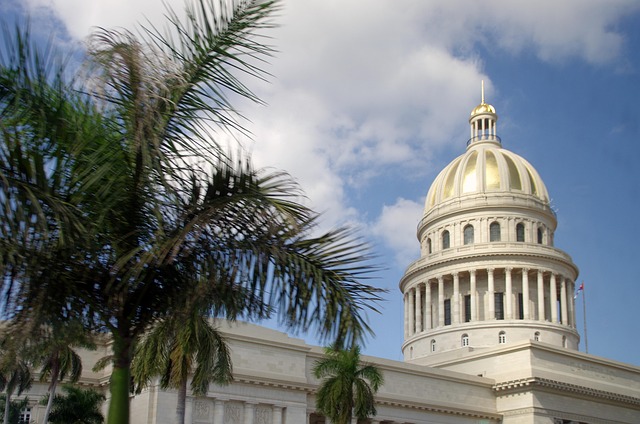
The Hidden Costs of Subsidies on Local Industries
Subsidies are financial aids provided by the government to promote the growth and stability of local industries. These monetary inputs can take various forms, such as direct cash payments, tax breaks, or grants. While subsidies aim to bolster local production and innovation, their impact is often more complex than intended. This article delves into the hidden costs associated with subsidies on local industries, revealing both economic and social implications.
Understanding Subsidies
Subsidies serve as a tool for governments to correct market inefficiencies and encourage certain behaviors, such as investing in renewable energy or supporting small farms over large agricultural conglomerates. On the surface, the rationale is compelling. By providing financial support, governments can stimulate job creation, enhance regional development, and promote local industries.
Despite their apparent benefits, subsidies can also have unintended negative consequences that are often overlooked. These hidden costs manifest in various forms, impacting both the economy and society at large.
Economic Implications
Market Distortion
One of the most significant hidden costs of subsidies is market distortion. When the government provides financial support to specific industries, it can lead to an imbalance in competition. Companies receiving subsidies may underprice their products since they can afford to do so, pushing competitors out of the market. This often leads to a monopoly-like situation where a few subsidized players dominate, stifling innovation and productivity.
Resource Misallocation
Subsidies can also misallocate resources. When governments funnel money into certain sectors, they divert funds from potentially more productive areas. This leads to inefficient investment, as subsidized industries may not have the same growth potential as non-subsidized alternatives. When resources are not allocated effectively, overall economic growth can stagnate, reducing opportunities for new market entrants.
Dependency and Risk Aversion
Another concerning aspect is the potential for dependency among businesses on government subsidies. Companies may become reliant on these financial aids, discouraging them from pursuing innovation or improving their operational efficiencies. This dependency can create a culture of complacency, where industries prioritize securing subsidies rather than focusing on competitiveness or addressing consumer needs.
Budget Constraints and Opportunity Costs
Subsidies are funded by taxpayer money. As such, the continuation of these financial aids can strain public budgets, leading governments to make difficult decisions about where to allocate funds. Subsequent cuts in vital public services such as education, healthcare, or infrastructure can result from the need to support subsidized industries. The opportunity costs of such subsidies can far outweigh their benefits.
Societal Implications
Income Inequality
Subsidies can exacerbate income inequality. Wealthy corporations are often the primary beneficiaries of such financial aids, as they have the resources to navigate complex application processes or leverage favorable policies. These entities may use their financial advantages to further increase their market dominance, perpetuating economic disparities. As a result, small businesses or startups frequently find it difficult to compete on uneven playing fields, which can stifle entrepreneurial initiatives.
Environmental Consequences
Subsidies may unintentionally promote environmentally detrimental practices. For example, agricultural subsidies can incentivize farmers to maximize output without regard for sustainable practices, leading to resource depletion, soil erosion, and water pollution. Similarly, fossil fuel subsidies can prolong reliance on non-renewable energy sources, hinder clean energy advancements, and contribute to climate change. The environmental costs associated with these practices can be profound, affecting not just local ecosystems but global health.
Public Sentiment and Trust
Public trust in government is a crucial element of a healthy democracy. When citizens perceive that subsidies disproportionately benefit certain industries or companies, frustration can mount. People may view these financial aids as favoritism, leading to skepticism and eroding trust in governmental institutions. This public sentiment can manifest in political backlash and calls for reform, further complicating the subsidy landscape.
Case Studies
Examining specific case studies helps illuminate the hidden costs of subsidies more vividly. Consider the U.S. agricultural sector, which has long benefitted from various forms of financial support. While these subsidies have sought to ensure food security and support farmers, they have often resulted in overproduction, environmental degradation, and significant public expenditure. For instance, the corn industry has been heavily subsidized, leading to an oversupply of corn-based products while simultaneously contributing to rising health issues related to sugar intake from high-fructose corn syrup.
In another example, the solar energy industry has seen substantial government support aimed at reducing dependence on fossil fuels. While this appears beneficial in promoting renewable resources, criticisms have arisen regarding the wide disparities in how these subsidies affect large corporations versus small renewable energy startups. In many cases, the larger players have been able to capitalize on the incentives far better, limiting competition and innovation in the sector.
Alternatives to Subsidies
The challenges posed by subsidies raise questions about more effective and equitable alternatives. Policymakers could consider implementing targeted investments in education and workforce training to encourage innovation, or establishing regulatory frameworks that incentivize sustainable practices across all industries. Another alternative could be to invest in infrastructure development, which provides broad benefits without favoring specific sectors unduly.
In some nations, implementing tax incentives based on performance metrics—such as innovation, job creation, or sustainable practices—could replace the broad application of subsidies while driving better economic outcomes. Such measures encourage competition and ensure that financial assistance fosters growth organically rather than through artificial support.
Conclusion
While subsidies are often deployed with good intentions to support local industries and stimulate economic growth, their hidden costs can have far-reaching implications. From market distortion and resource misallocation to exacerbated income inequality and environmental degradation, the unintended consequences of these financial aids can undermine their intended benefits. It is crucial for policymakers to evaluate the broader impact of subsidies critically and explore alternative strategies that promote sustainable growth without incurring hidden costs. A balanced approach that considers the long-term implications of government intervention in markets is not only prudent but necessary for a robust economic future.
Ultimately, fostering a healthy ecosystem for local industries may require a shift away from broad subsidies towards more targeted and equitable strategies that can stimulate genuine innovation, promote competition, and prioritize sustainable practices.



